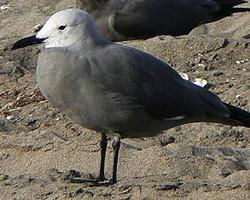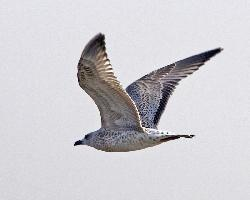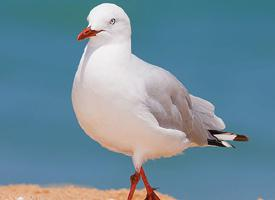
Stav ohrožení
| Ohrožen |
Popis zvířete
The Armenian Gull (Larus armenicus) is a fascinating and relatively less-known species within the large family of gulls, Laridae. This bird is of particular interest to ornithologists and birdwatchers due to its restricted range and distinctive features. It primarily inhabits the high-altitude lakes of the Caucasus and surrounding regions, including parts of Turkey, Armenia, Iran, and occasionally venturing into neighboring areas during the winter months.Adult Armenian Gulls are medium-sized birds, typically measuring between 55 to 65 centimeters in length, with a wingspan that ranges from 135 to 150 centimeters. They possess a robust body, a relatively long neck, and a stout, slightly hooked bill that is yellow with a distinctive red spot on the lower mandible, a common trait in many gull species that serves as a target for chicks to peck at, stimulating regurgitative feeding from the parents.
The plumage of the Armenian Gull is predominantly white, with a pale grey back and upper wings. The tips of the primary feathers are black with conspicuous white spots, known as "mirrors". During the breeding season, the adult's head is adorned with a faint hood of light lavender-grey, which fades to white in the non-breeding season, leaving just a shadow of its former marking around the eye area. Their legs and feet are a bright yellow, adding a splash of color to their otherwise neutral-toned bodies.
One of the most interesting aspects of the Armenian Gull is its habitat and breeding behavior. These birds are closely associated with high-altitude lakes, where they build their nests on isolated islands or inaccessible shorelines, safe from predators. The nests are constructed from plant material and are often situated in colonies, where both parents share the responsibility of incubating the eggs and feeding the young. Their diet is omnivorous and opportunistic, consisting of a wide range of food items including fish, insects, small rodents, and even refuse, showcasing their adaptability to different food sources.
The call of the Armenian Gull is a raucous "kyaah-kyaah-kyaah", typical of gulls, and is often heard during the breeding season as they communicate with their mates or signal alarm at the approach of predators.
Despite its somewhat limited range, the Armenian Gull is not currently considered to be at significant risk of extinction. However, like many species with restricted habitats, it could be vulnerable to environmental changes, pollution, and human disturbance. Conservation efforts and ongoing research are crucial to ensuring the stability of its population and preserving the unique ecosystems these birds call home.
In summary, the Armenian Gull is a distinctive and intriguing species, emblematic of the rich biodiversity found in the Caucasus and adjacent regions. Its specialized habitat preferences, combined with its striking appearance and behaviors, make it a compelling subject of study for ornithologists and an exciting find for avid birdwatchers.
Podobná zvířata
Nové fotografie zvířat
Top 10 zvířat
- Common house mosquito (Culex pipiens)
- Common cockchafer (Melolontha melolontha)
- Colossal squid (Mesonychoteuthis hamiltoni)
- Hooded merganser (Lophodytes cucullatus)
- Australian box jelly (Chironex fleckeri)
- Fruit fly (Drosophila melanogaster)
- Common reed warbler (Acrocephalus scirpaceus)
- Elephant hawk moth (Deilephila elpenor)
- Moustached guenon (Cercopithecus cephus)
- Diana monkey (Cercopithecus diana)


